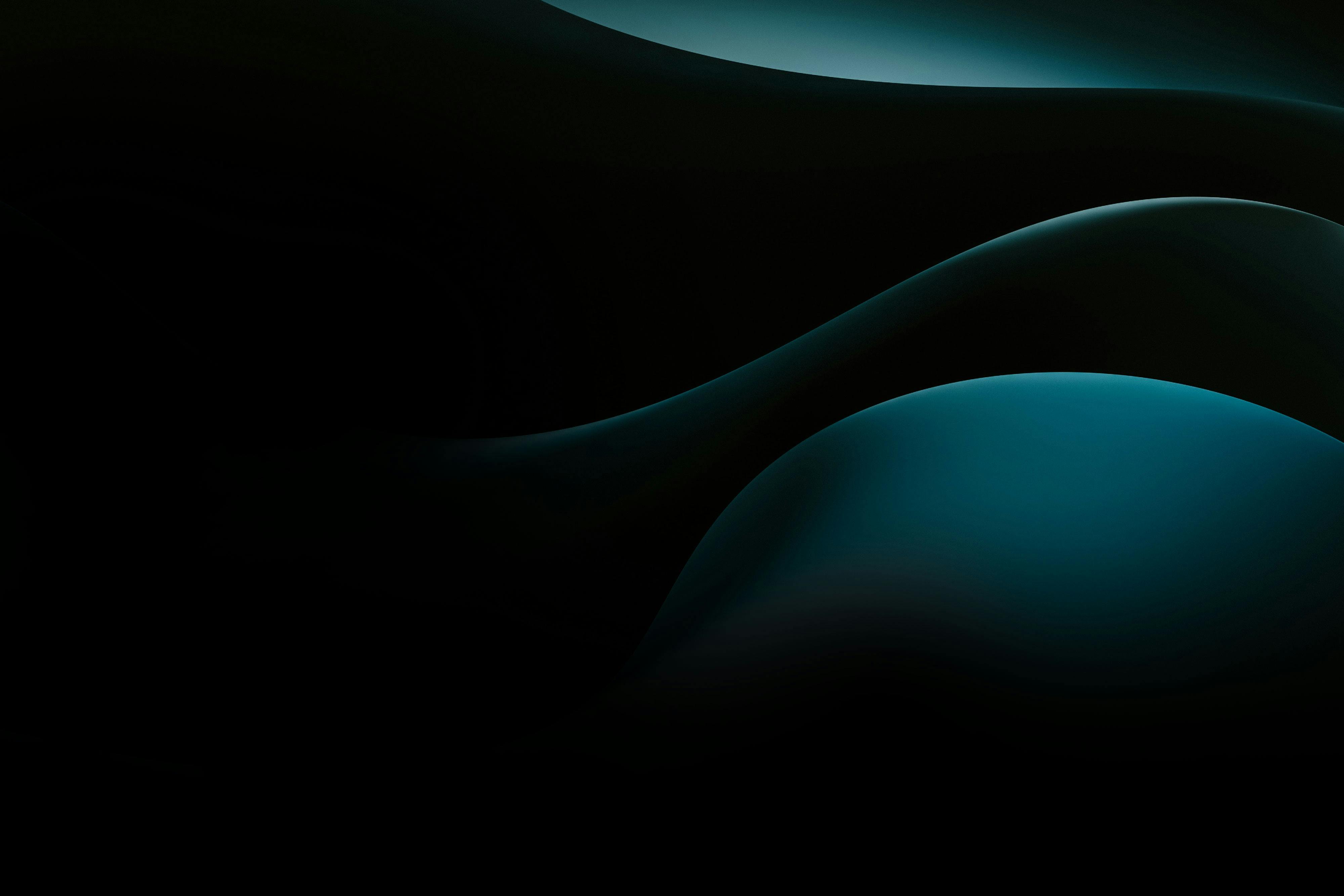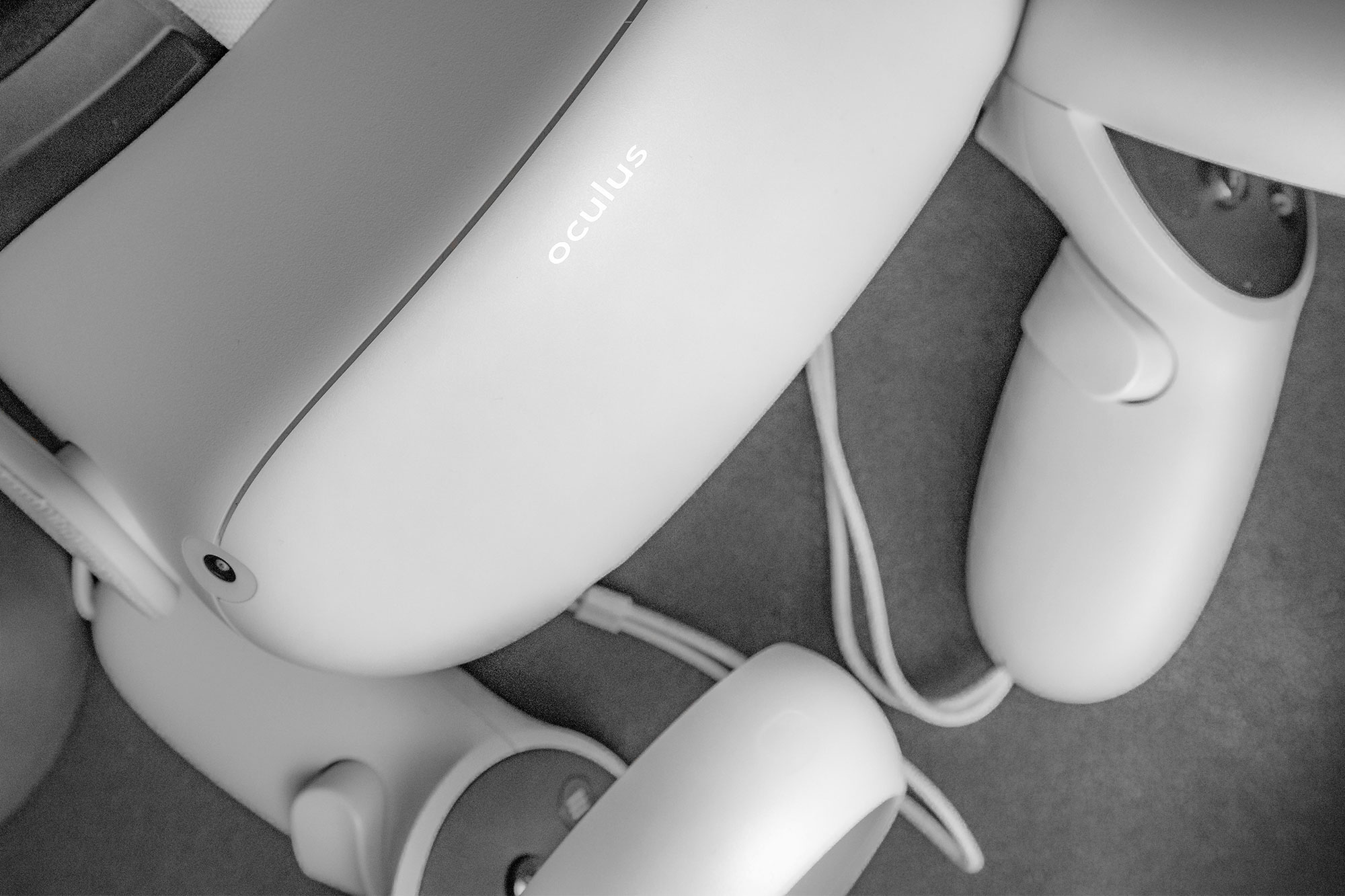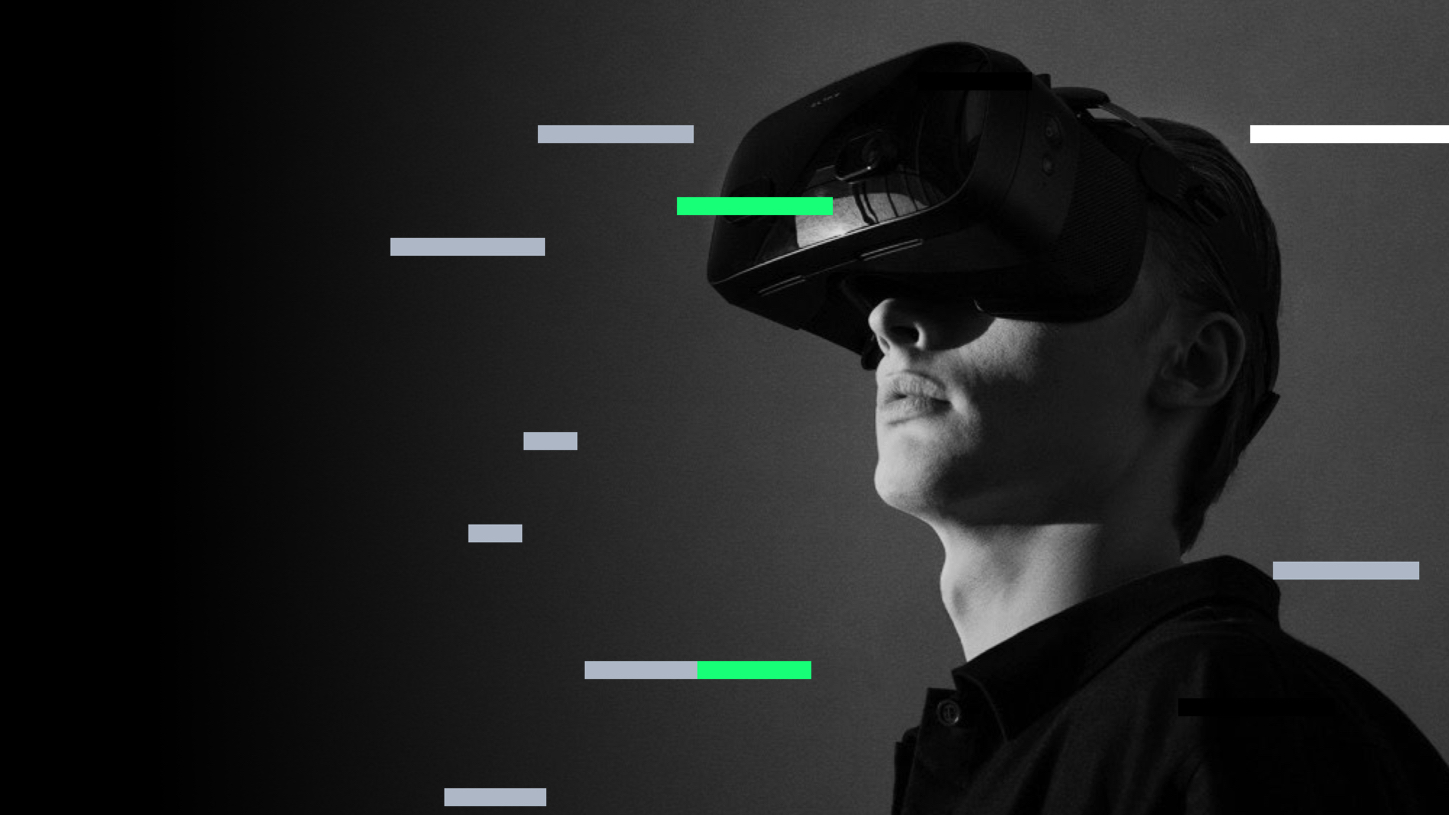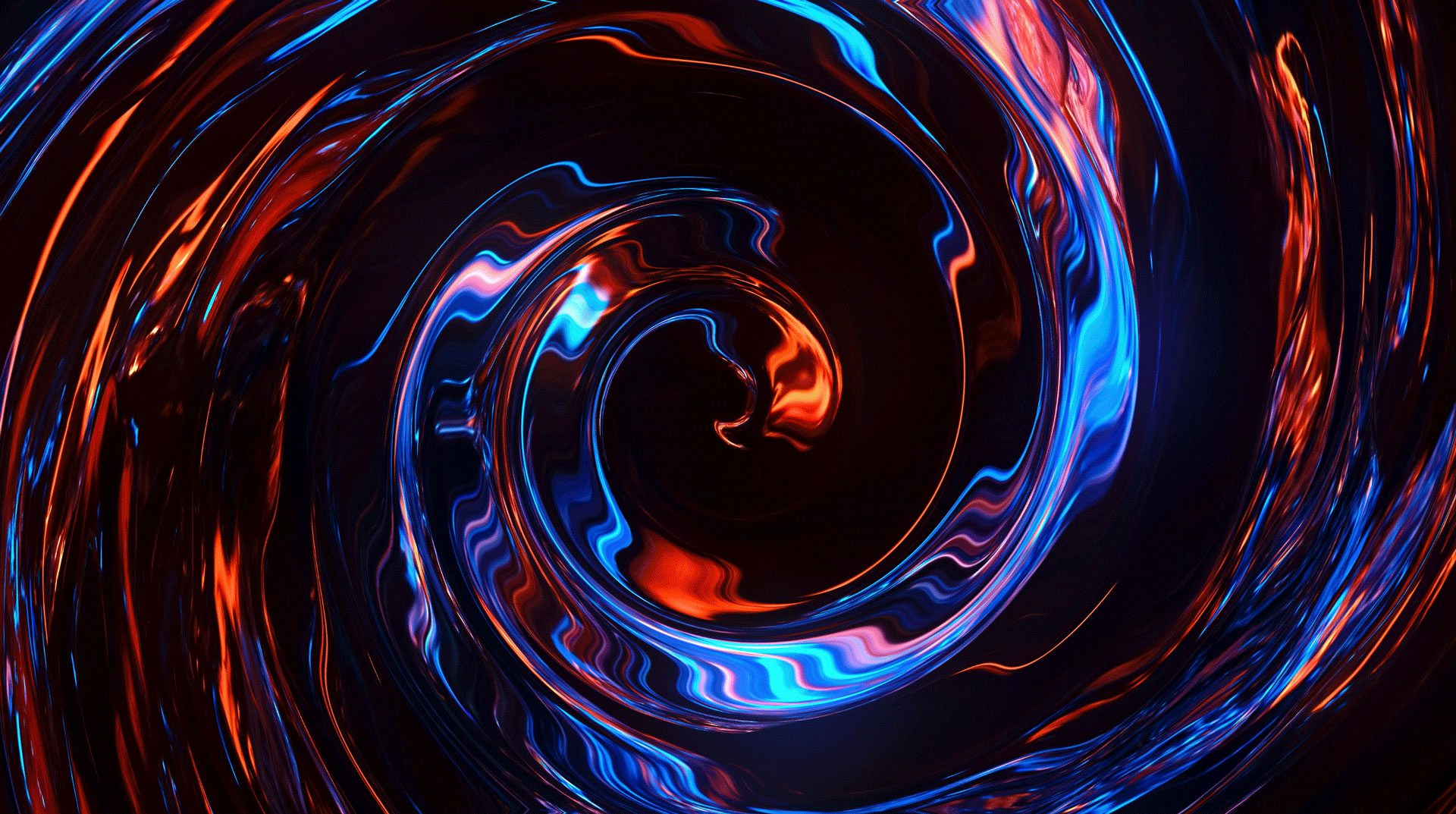In the future, people will live fluid experiences between the physical and digital worlds, as seen with the hybrid continuum. With this in mind, we are developing smart ways to integrate virtual and immersive reality into users’ customer journeys. Our research of competitive solutions is driven and inspired by a systemic vision informed by the challenges of developing technology.
A three phases relationship
If we set aside technical aspects for a moment, users’ perception of entering a 3D world includes sight, hearing and mobility. Summarised in three phases, the approach to immersive technology involves
- Phase one: The “wow” effect
- Phase two: Engagement
- Phase three: Disengagement
Almost everybody’s first virtual experience starts with a ‘wow’. Perception is so unique and vibrant that it’s hard not to fall in love with it. After gaining confidence in the technology, we move to phase two.
The object-driven engagement follows stupor. Users respond naturally, picking up the challenge whenever there is a task to accomplish. Detachment from the outside world stimuli starts now. The virtual world is almost total immersion, and focus is at its peak.
Disengagement comes at last. Technological limitations become more visible, the headset starts to bother, timeless perception is disorienting, and the sudden awareness of being in a fictional world that is not real becomes worrying. In some cases, this phase is less of a problem, like in the visual and performative arts, research and development, and training.

Dyson demo VR
Immersive retail
Let aside the criticality of phase three; the first and second phases offer plenty of opportunities to attract people’s attention, help with their choices and bring value to the experience journey. Let’s analyse four developing applications of this technology: virtual spaces, training, product discovery and try-on, and customisation. The aim is to highlight the possibilities and resolve critical points.
Beyond physical spaces
Space extends infinitely inside the virtual. Likewise, the buying experience can develop according to new and more efficient dynamics resulting in better client satisfaction and immersion in the brand’s values. Until recently, access to the entire service catalogue at a store or pop-up shop was physically impossible. Nowadays, bringing Galapagos’ vibes into a travel agency is instead possible. Real-time customisation of products, based on all variants, is allowed by immersive reality technologies.
In the product category, the online buying experience moves from “scrolling Gucci’s website” to “immersing in Gucci’s world”, with customisable experiences based on users’ needs. We transition from a list of detailed products to active exploration of the brand in space and time—a memorable experience beyond traditional web searches.
Although it’s easy to take users’ from the physical to the virtual dimension, it’s more challenging to transfer the strong emotions born in the immersive experience back to the physical reality past the headset. It becomes fundamental to create a continuum between the two worlds.
Users at home or in the shop live a transition between virtual isolation and the back-to-reality experience that needs to be designed accordingly. The disconnect between physical and digital becomes here ever more problematic. A possible solution includes material integration to the digital interaction, such as textile samples of the VR dress or the smell of a new vehicle to purchase.
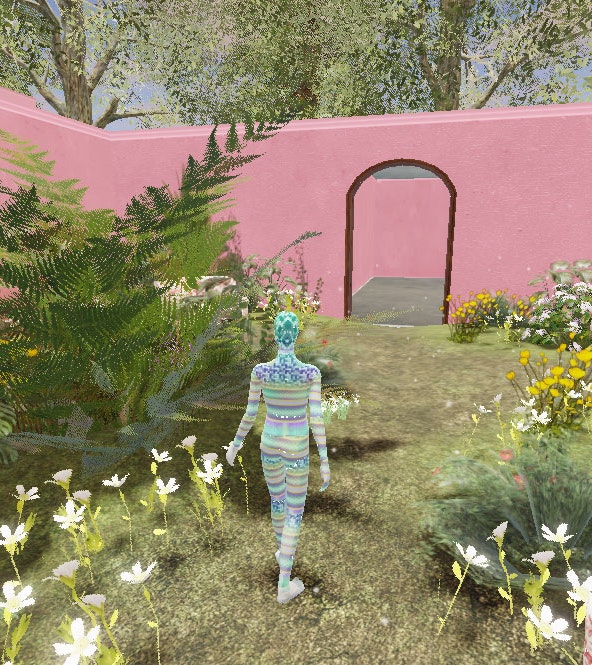
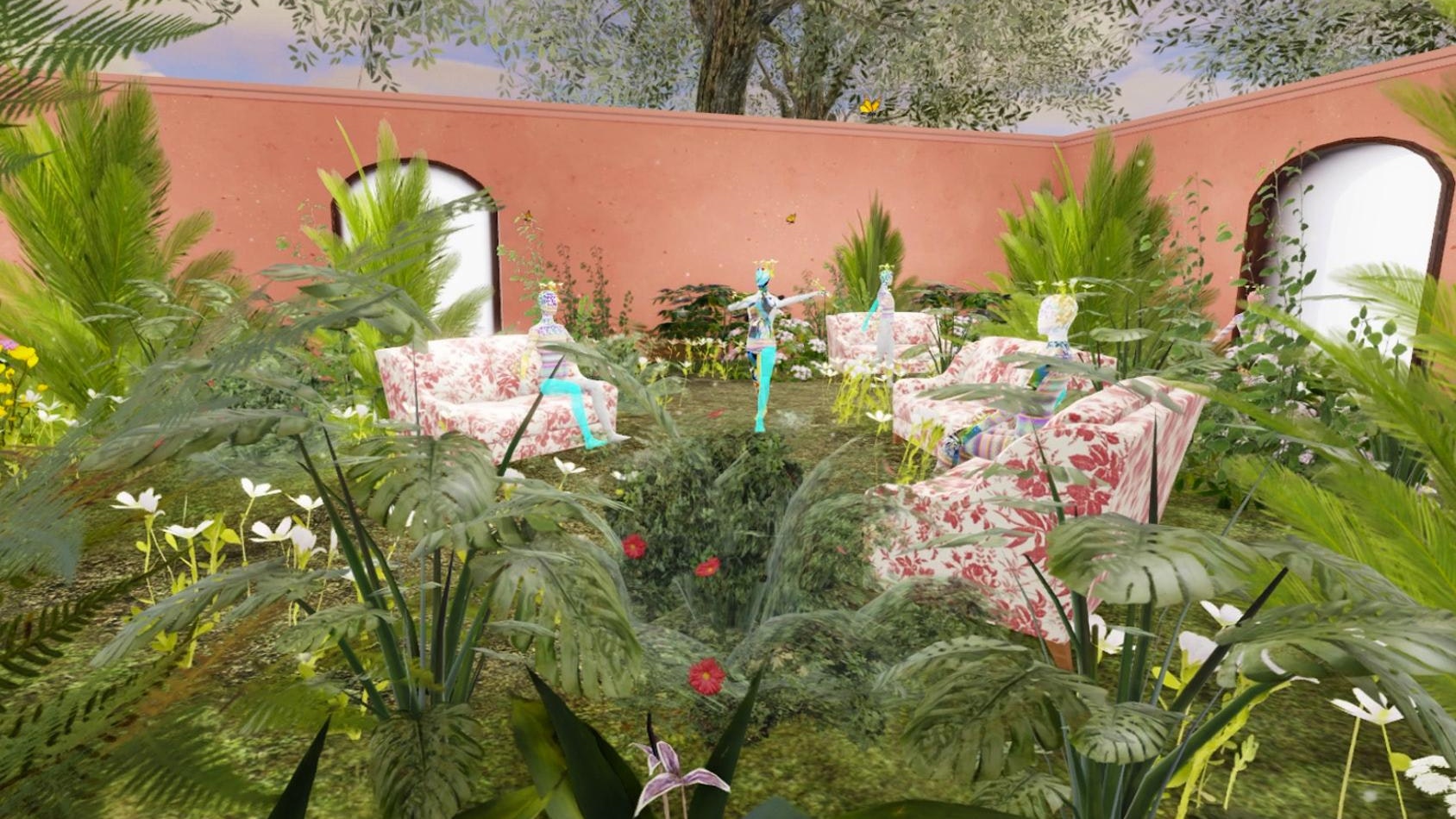
Roblox, Gucci Bloom room
Training
Despite virtual training experimentation advancing fast, the retail sector doesn't have the same luck. Nonetheless, it allows new staff to familiarise themselves with the new work environment and procedures without being physically there. The virtual approach allows practical learning next to theoretical in a simulated environment that cuts business costs.
Since 2018, Walmart has trained some staff with immersive technologies simulating physical tools and shops. Workers rehearse high-stress situations like crowded festive days. Training is more immersive and memorable because of the advantages of involving the body in the learning sessions. This approach favours the long-term retention benefits of muscle memory.
Those are some contexts where virtual reality creates value for educational processes. Specifically, retail workers can benefit from the vital advantage of being ready to handle complex situations before they even happen.
Walmart VR headsets train associates in-store
Product discovery
If we go back to the possibility of going beyond physical spaces, effective use of storytelling through virtual reality increases engagement by far. Dyson developed an Oculus app to virtually test some of its haircare lineups.
Besides 3D replicas of products, clients can experience first-hand the production process of their chosen product, significantly influencing their emotional engagement. They can sit next to the artisan while working with the leather used to make their shoes. They can deep dive into the wonders of the Red Sea’s water before their vacation or try the security and assisted driving systems of a car they would like to buy. Seat on their new flat’s terrace and experience the four seasons before moving.
Storytelling becomes crucial in successfully developing such projects. It means increased optimisation between design and technology. There is no value in showing a 2D video with a virtual headset or creating an immersive experience without the right approach to best communicate the product’s value. Our role as designers is to interpret technology’s potential to transform it into sustainable value for people.
The best results will be those able to leverage the stupor and excitement of the technology and the uniqueness of the moment with a compelling narrative aligned with the brand’s objectives.
Dyson demo VR
Product customisation and virtual try-on
What would be the advantages of showing the shop assistant precisely what we imagined with a virtual representation? Often, there is a considerable gap between expectations and reality in the customisation and accessorisation of a product. Testers and 3D render penalise spatial, volumetric and emotional components.
In automotive, Mazda found a solution to the problem by allowing its clients to “live” the customisation of their favourite car with immersive technology that simulates the car’s exploration on a 1:1 scale.
Ways to come back to the physical from the virtual words need improvement. In particular, work has to be done to maintain the emphasis gained in the immersed after removing the headset. Solving those problems requires strategic design thinking that will make a difference in results.
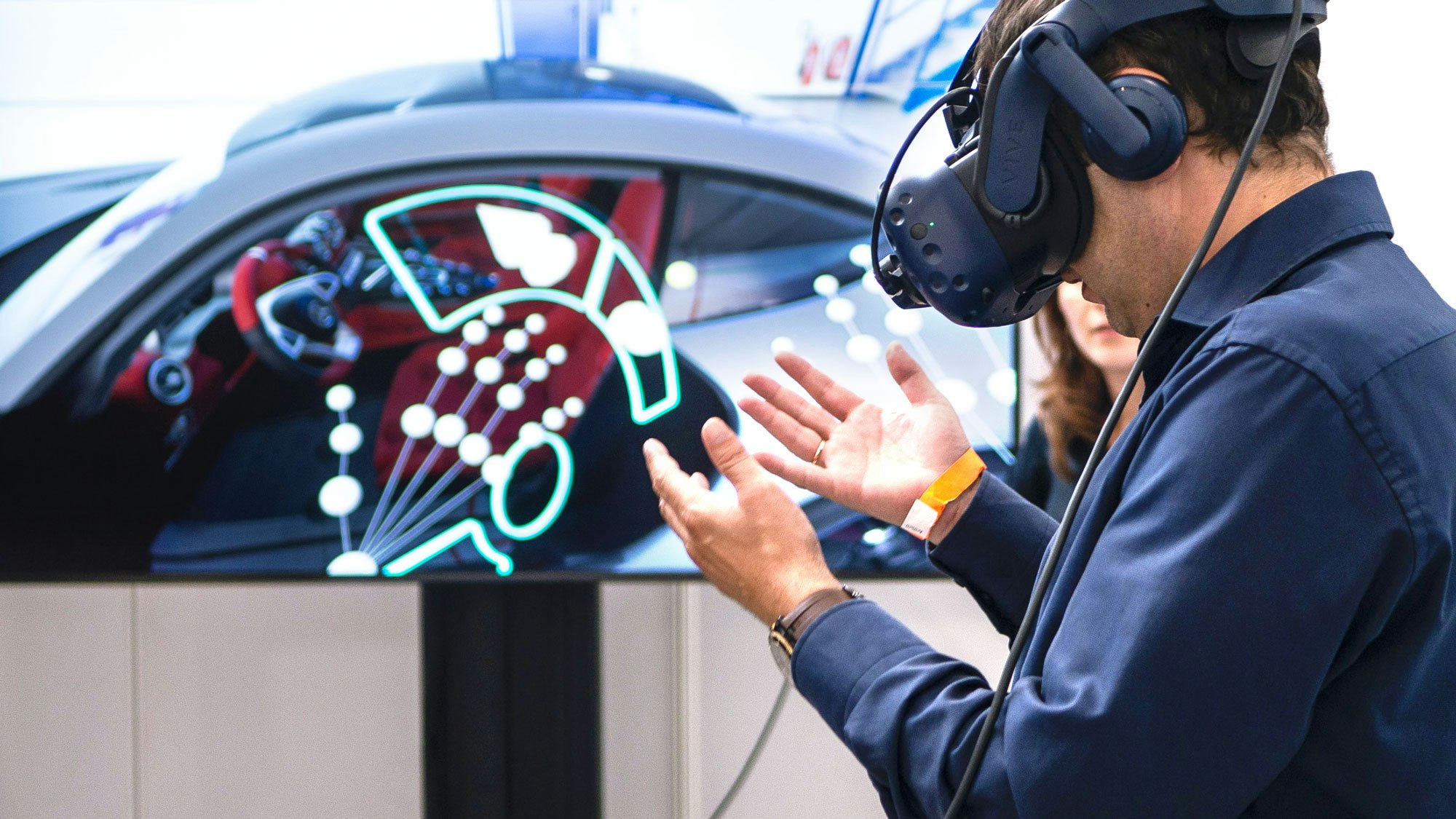
From utopian visions to brand opportunities
We saw how it is possible to create many valuable immersive experiences despite the limits of developing technology. It is also clear why storytelling becomes a fundamental part of designing immersive experiences more than any funnel or customer journey. This practice must co-exist with user experience and software development to generate memorable and effective results.
We also understand that returning to the physical world from a virtual experience is a very sensitive moment for the user. To make this step seamless, we must carefully design users' experiences. The most successful solutions will be those that can maintain, multiply and direct the many emotions toward an end of the customer journey that is the most natural possible.
Virtual reality enhances brand awareness opportunities, facilitates market differentiation and brings clients closer to the brand's universe of value in ways not yet explored. Every immersive experience should communicate something beyond what we are already accustomed to establish deeper connections with the products and services we most desire.
Lastly, it's important to remember that even if the technology it's not a direct answer to clients' primary needs but a product of writers' and visionaries' imagination, VR experimentation is an added opportunity to give customers a magical, memorable and fresh touch that 2D screens may not be able to provide (anymore).
If you don’t want to miss any updates, subscribe to our newsletter.
